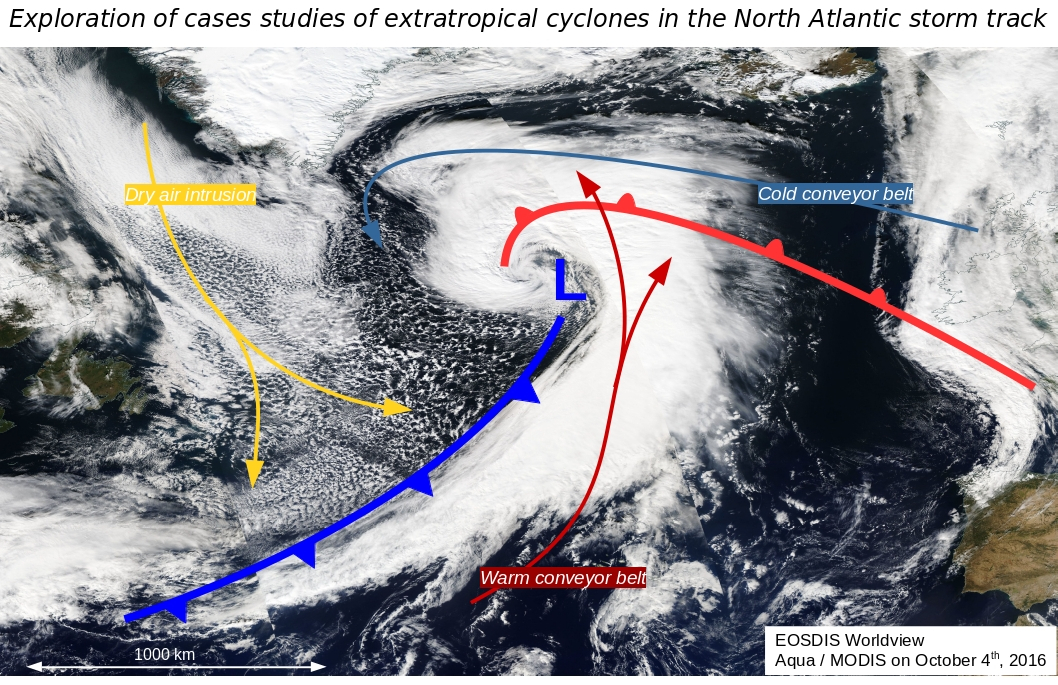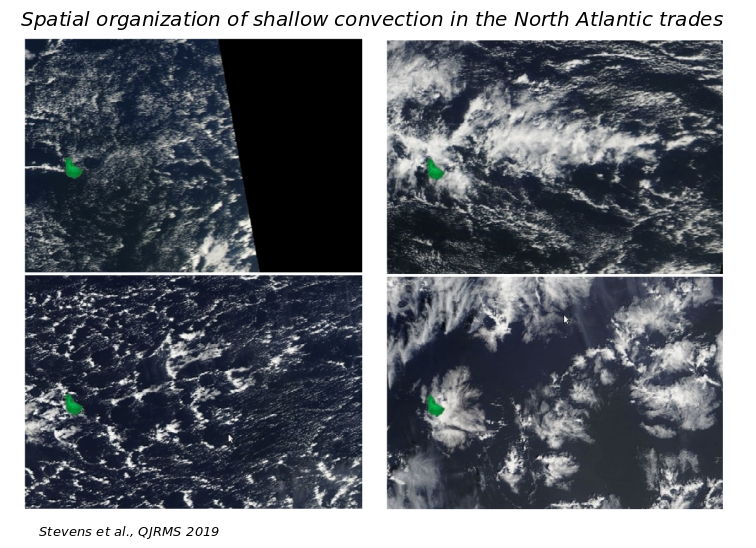

Institute Laboratoire de Météorologie dynamique (LMD), Institut Pierre Simon Laplace (IPSL) Research group Étude et Modélisation du Climat et du Changement Climatique (EMC3) Contact details Email: jessica.vial@lmd.jussieu.fr Room no: 309 Campus Pierre et Marie Curie (Paris 5e) 4 place Jussieu, T 45-55, 3rd floor |
Publications Curiculum Vitae PhD thesis from the Climatic Reasearch Unit (CRU), University of East Anglia (Norwich, UK). "Climate model simulations of winter northern hemisphere atmospheric blocking: statistical assessment, dynamical perspective, regional impacts and future change." Outreach / Grand public (en Français) |
Current research
How do clouds influence climate and climate change?
Clouds are ubiquitous on Earth. By interacting with solar and terrestrial radiation, they exert a radiative heating/cooling - at the top of the atmosphere, within the atmosphere and at the surface - and as such play a fundamental role in atmospheric circulation and energetics of the climate system. My interest is on the role of shallow convective clouds and the various factors that control their spatio-temporal variability. This includes: |
From Vial et al. JAMES 2019 doi: 10.1029/2019MS001746
|
By revisiting the concepts of radiative forcing and climate feedbacks, we have developed a methodology to separate the relative contribution of the direct response to CO2 increase and the response to surface warming in climate projections of global warming. This had never been done before. This work has thus allowed to interpret the real contribution of climate feedbacks to the inter-model dispersion of climate sensitivities estimated by climate models. Among all climate feedbacks, that of low-level clouds over tropical oceans is the most uncertain.
➥ Vial J., Dufresne J.-L. and Bony S. On the interpretation of inter-model spread in CMIP5 climate sensitivity estimates. Climate Dynamics, 41 (11-12), 3339-3362 doi: 10.1007%2Fs00382-013-1725-9. ✴ Highly Cited Paper ✴
|
Watch the short EUREC⁴A documentary (20 minutes) by Marius Lena and Lulian Furtuna |
|

|

|
Climate outreach ✦ Climat pour tous
Diffusion de l'information & médiation scientifique
Accompagnatrice pédagogique et scientifique - Projet des collèges pilotes de la fondation la main à la pâte Liens divers
|




|